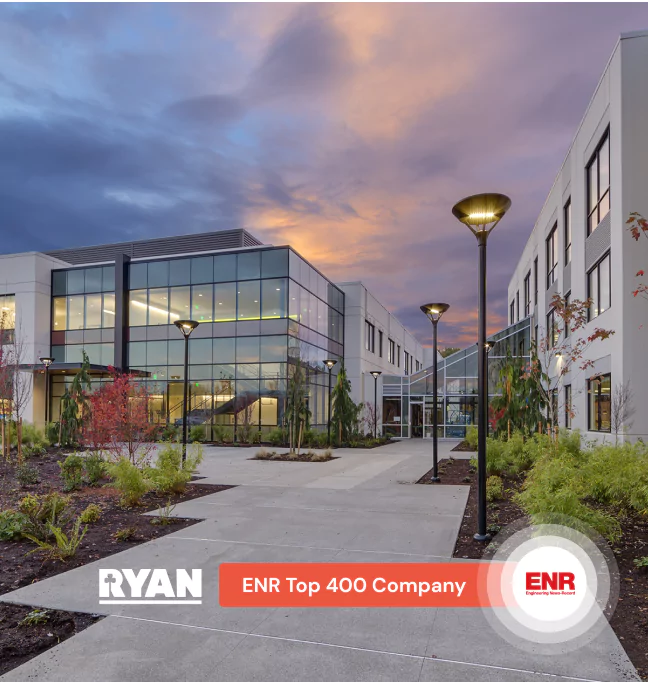Started originally in 1938 as Ryan Lumber and Coal, it wasn’t long before the Co-founders of Ryan Companies, James and Francis Ryan, added construction to their offerings. That expansion was the beginning of the company’s design-build approach. Today, Ryan is listed on the ENR top contractors list and offers comprehensive commercial real estate services as a national developer, architect, capital investment consultant, builder and real estate manager with a focus on bringing lasting value to its customers and the communities in which it works.
Ryan’s market depth includes retail, industrial, healthcare and senior living. The company’s development and corporate build-to-suit work span a wide range of product types including office, mixed-use, hospitality, multifamily housing and mission-critical facilities.
With 14 offices across the US, nearly 1,500 employees, and projects being completed in 38 states, Ryan was looking for a software solution that would centralize their resource management across the country, helping to forecast future workforce needs and project demands.
THE CHALLENGE
In recent years, Ryan had used a mix of Microsoft Excel spreadsheets and homegrown tools for their resource management. Though tedious and cumbersome, those tools were able to provide basic resource planning for individual offices but lacked forecasting capabilities and enterprise-level insights.
Ryan Companies’ resource plan requires short-term, mid-term, and long-term planning – from assignments and hiring, through to projections. With 15 offices, Ryan needed a solution that could centralize data from every corner of the US. This meant implementing new software that provided enterprise-wide insight into their workforce utilization rates and allowed for shared access across multiple offices and market sectors.
THE SOLUTION
When evaluating options for improving their resource management, Ryan put a strong emphasis on tools that would be easy-to-use, but powerful enough to support resource planning across multiple offices. Ryan also put focus on solutions that could provide insight into their workforce utilization rates and forecast future labor demands across their entire enterprise.
That combination of powerful, yet approachable software led Ryan to Bridgit Bench, a construction resource management tool built specifically to handle the dynamic nature of the construction industry. “Bridgit Bench fills the void we have for resource planning and we really like the feel of the platform,” said Barry Sullivan, Vice President of Construction Operations, Great Lakes region at Ryan Companies. “Similar to some of our favorite Ryan Companies software, like Procore and Autodesk’s Building Connected, it is very straightforward and intuitive. There is no user manual or work instructions needed.”
Since going enterprise with Bridgit Bench, Ryan Companies has streamlined the tracking of over 510 projects and 700 people.

“The functionality of Bridgit Bench allows us to flip between the resource and project data quickly, in a way that is much more agile than our current spreadsheet setup.”
Barry Sullivan, VP of Construction Operations, Great Lakes at Ryan Companies
While Ryan is just getting started with Bridgit Bench for enterprise resource management, the overall impact Bridgit Bench can have is already being felt by the team. “The ROI for Bridgit Bench can be calculated through four main components,” explains Morgan Traynor, Senior Director of Operational Excellence at Ryan. “Manager efficiency, reduction of new hire costs, proactive and accurate workload leads, and increased profits.”

“The overall impact Bridgit Bench can have on Ryan is remarkable – from immediate time-saving efficiencies for our trusted leaders to long-term talent acquisition.”
Morgan Traynor, Senior Director of Operational Excellence at Ryan Companies
“We were managing our resources in 30 different spreadsheets, creating confusion and uncertainty. Bridgit Bench allowed us to consolidate our resource planning into a single platform.” said Morgan Traynor, Senior Director of Operational Excellence at Ryan. “For us, bench strength and hiring was always a lagging indicator. Now in 2021, with the help of Bridgit Bench, we are going to be able to turn that lagging indicator into a true performer for us.”
The team at Ryan is also working closely with the team at Bridgit to help guide future feature releases and integrations.

